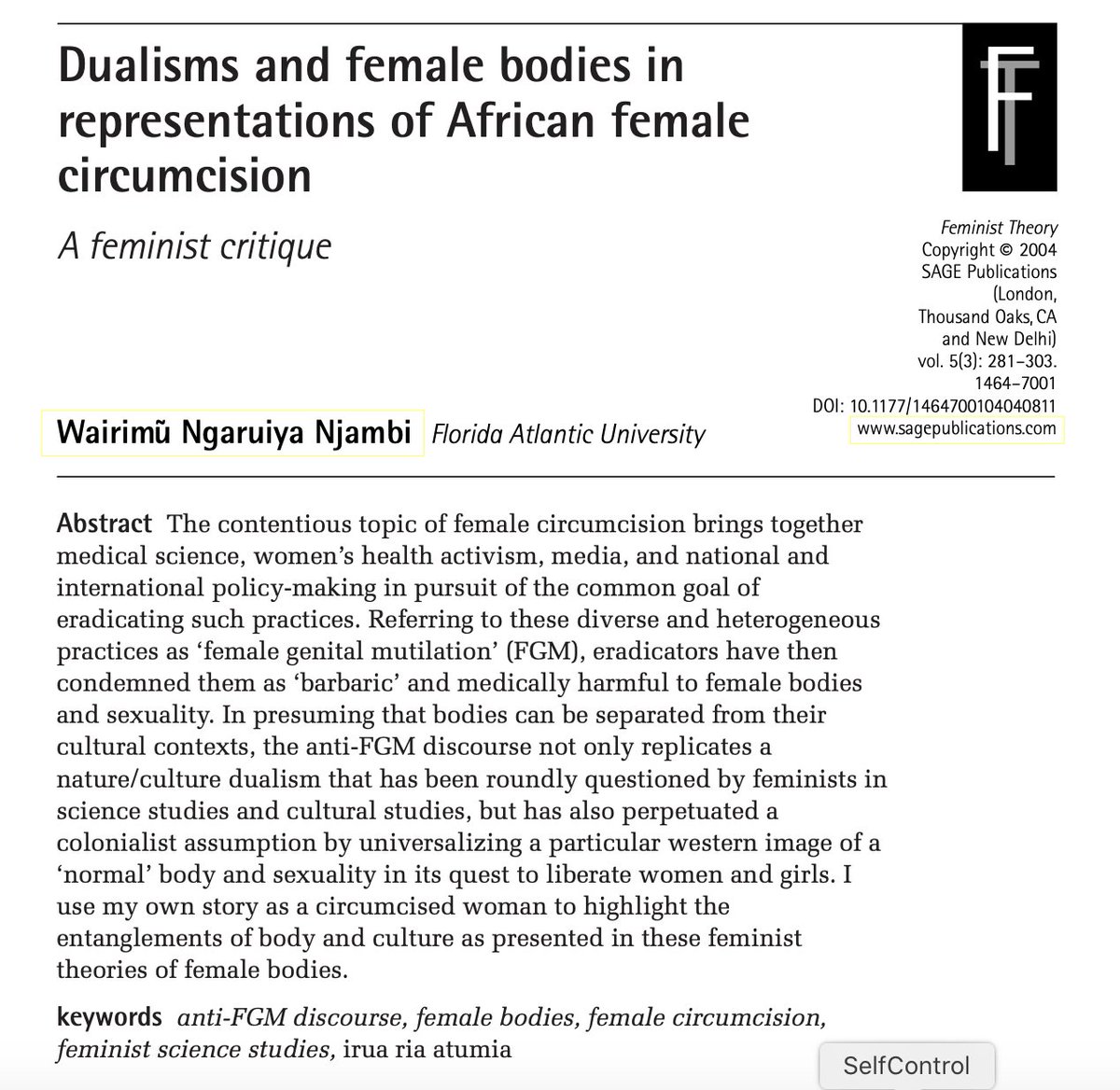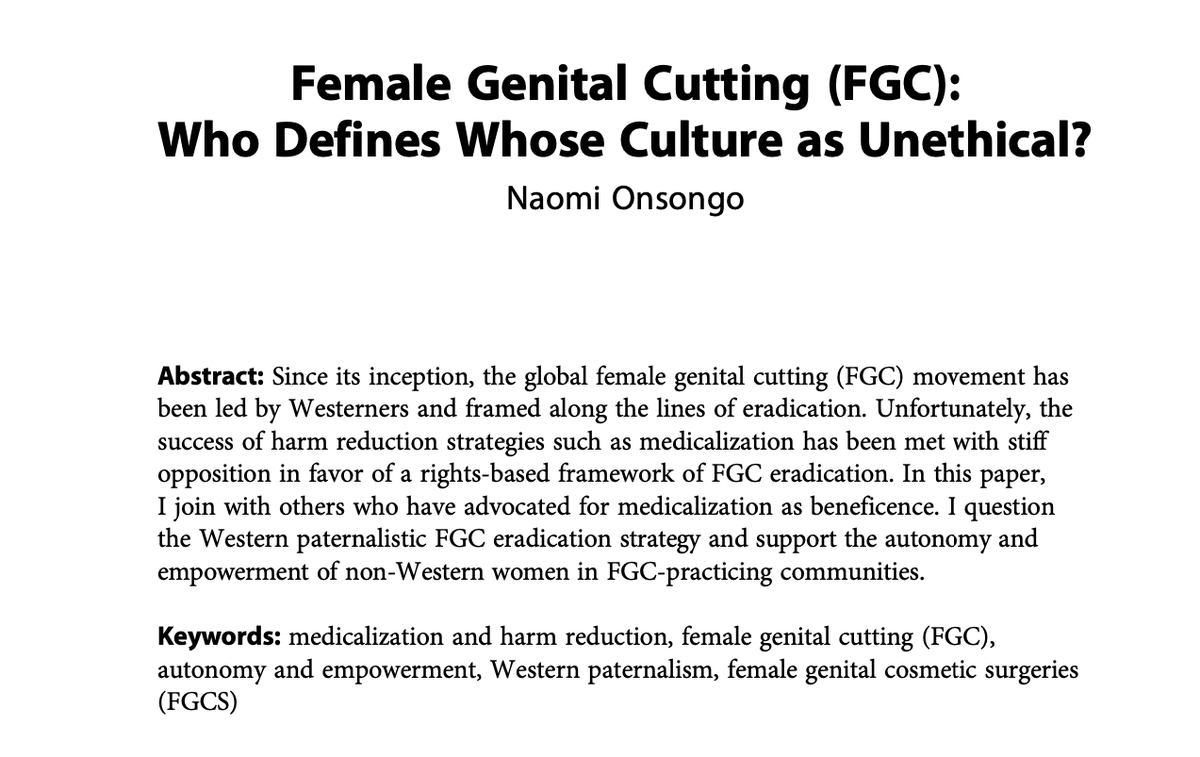
Here is a little window into how the medical literature can get biased by controversial opinions disguised as 'systematic reviews' for anyone interested. I'll walk you through an example. Take this highly cited review article in the flagship @jsexmed sciencedirect.com/science/articl… 

It purports to show that the "highest quality studies suggest that medical male circumcision has no adverse effect on sexual function, sensitivity, or satisfaction." Okay, how was the quality of studies rated, who did the rating, and is that what the studies actually show? 

First, just notice that the authors report "no conflict of interest." Which is weird because the first author is co-founder of a pro-circumcision lobbying organization called the Circumcision Academy of Australia, several of whose board members derive their primary incomes from 

performing medically unnecessary circumcisions (see tandfonline.com/doi/full/10.10…); and the second author had, months before this publication came out, filed a patent application for a device he invented for performing such circumcisions. 

See: patents.google.com/patent/WO20131…. But no matter. Even if they didn't actually report their glaring conflicts of interest, perhaps they took care to build in strict precautions in their assessment of the available evidence to guard against any potential biases? 

Unfortunately not. Although they nominally used the SIGN criteria for assigning levels of evidence (guiasalud.es/egpc/traduccio…), they failed to employ a "carefully assembled multidisciplinary group" as the guidelines for proper use of the criteria require. As @JennBossio et al. note
"It appears the two authors alone composed the group who rated the articles. According to the SIGN criteria they used, would their entire review in question not warrant a rating of 'low quality' based on the 'high risk of bias' introduced by the authors' well documented, 

unconditional support of the practice of circumcision?" (ncbi.nlm.nih.gov/pubmed/25761651). But as I explain in "The Unbearable Asymmetry of Bullshit" (healthwatch-uk.org/images/Newslet…) such letters to the editor are MUCH less visible than original "systematic reviews," 

so the latter continue to get cited (111 times since 2013 in this case), while the former are rarely noticed and tend 2 have little impact (6 citations to the Bossio et al. letter, 4 of them in articles by me). In another paper, Bossio et al. (sciencedirect.com/science/articl…) note 



that the big headline conclusion that male circumcision has no negative impact on sexual function, sensitivity, or satisfaction does not even line up with the evidence actually presented in the review by Morris & Krieger, but is more their "interpretation of trends" (see below). 

Another author has argued (again, in a much less visible publication), that the ratings of study quality by M&K have more 2 do with the *results* of the study (whether it favors their conclusion or not) than the actual quality of the study (see screenshot) file.scirp.org/pdf/ASM_201503… 

Nevertheless, this "systematic review" - with its headline conclusion that is not even supported by the evidence presented in it - continues to be referenced as the 'final' word on the subject in key sources used by unsuspecting doctors like @UpToDate littlesproutings.com/wp-content/upl… 



In sum, that is how a polarized position held by a small, committed coterie can get dressed up as an objective-seeming "systematic review" which goes on to distort the subsequent literature (and associated policy) for years to come, as discussed here tandfonline.com/doi/abs/10.108… 

And because it is so much harder (not to mention time-consuming) to get a proper rebuttal of such biased reviews into the same flagship journals that initially published them, you get an "asymmetry of bullshit" situation as noted here healthwatch-uk.org/images/Newslet… (credit: @ziobrando) 

As for the issue of sexually-relevant effects. Circumcision removes the most sensitive parts of the penis to light-touch; so penile sensitivity is *necessarily* affected by circumcision (see my discussion here onlinelibrary.wiley.com/doi/abs/10.100…). Whether that amounts to a sexual harm is ...
complicated but @RobDarbyCanberr and I have a lengthy discussion of the concept of sexual harm as it relates to the available evidence here: papers.ssrn.com/sol3/papers.cf…
P.S. When I say "small coterie" I mean this kind of thing (see screen shot) - from Retraction Watch retractionwatch.com/2016/11/22/jou… 

• • •
Missing some Tweet in this thread? You can try to
force a refresh



















